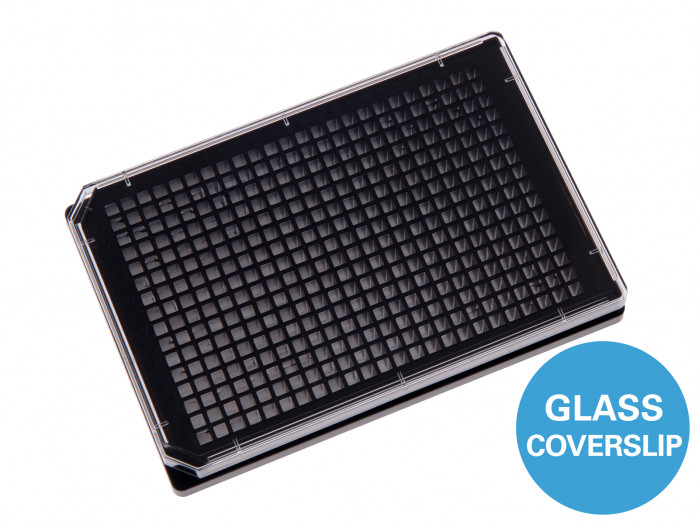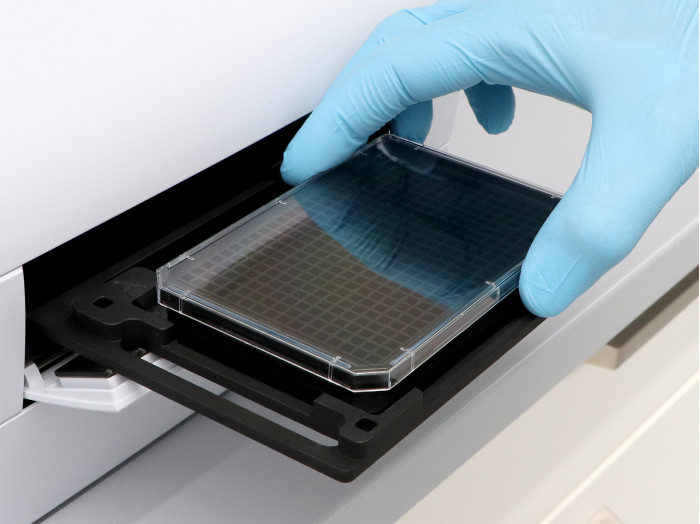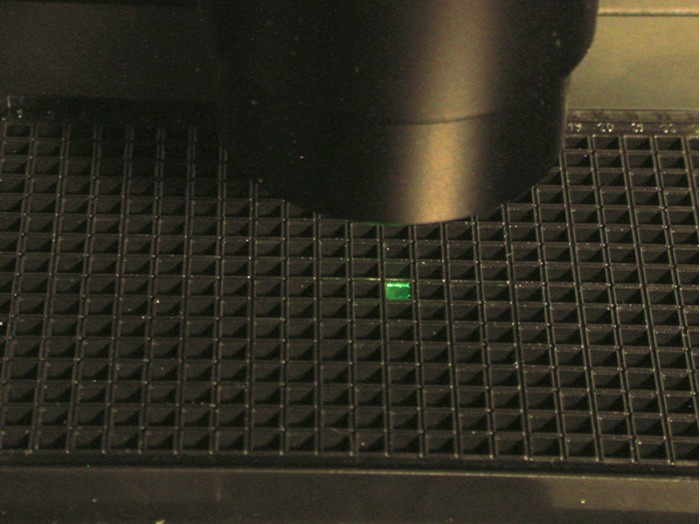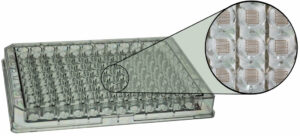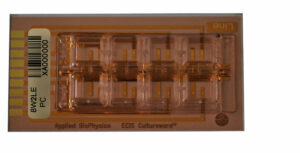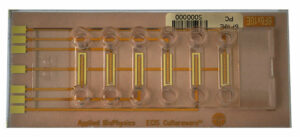A black 384 well plate with square wells and a #1.5H glass coverslip bottom for high throughput screening using TIRF and super-resolution microscopy
- Compatible with robotics, due to an ANSI/SLAS (SBS) standard format
- Brilliant cell imaging due to the low thickness variability of the #1.5H glass coverslip and the excellent inner well and whole plate flatness
- Low well-to-well crosstalk in fluorescence microscopy
Applications
- Cultivation, high throughput screening (HTS), and high-resolution microscopy of cells
- Widefield fluorescence imaging and confocal microscopy of living and fixed cells
- Compound screenings (toxicology)
- Large-scale transfection experiments
- Live cell imaging, also suited for extended periods
- Total internal reflection fluorescence (TIRF) and single molecule applications
- Super-resolution microscopy (STED, SIM, (F)PALM, (d)STORM) and fluorescence correlation spectroscopy (FCS)
- Immunofluorescence staining
Technical Features
- Standard format, compatible with robotics and plate readers due to an ANSI/SLAS (SBS) standard format
(85.5 x 127.5 mm) - 384 quadratic wells with standard numbering
(letters A–P and numbers 1–24) - Suitable for fluorescence scanners, plate readers, robotics, and lab automation
- Bottom made from D 263 M Schott glass with a thickness of 170 µm +/- 5 µm
- May require coating to promote cell attachment
- No autofluorescence
- Excellent inner well flatness and whole plate flatness
- Compatible with staining and fixation solvents
- Non-cytotoxic and biocompatible
- Immersion oil compatible
- Sterile with single packaging
The Principle of the µ-Plate 384 Well Black Glass Bottom
The Coverslip Bottom
The µ-Plate 384 Well Black Glass Bottom features optimal flatness properties, which are crucial for high-resolution microscopy in screening applications. The glass coverslip provides high accuracy and facilitates imaging from well to well across the entire plate with less variation in focus due to the rigid material with high mechanical stability.
